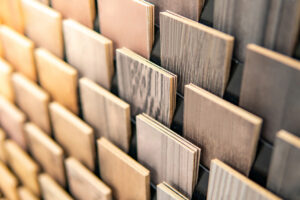
There are a variety of reasons why you would wish to reface your cabinets rather than purchasing new ones. Basically, if existing cabinet sizes and forms are still functional, and they’re robust and durable on the inside, you don’t need to spend the money on new cabinets.
Refacing, on the other hand, is exactly what it sounds like: it allows Cabinet Magic to give your cabinets a makeover. We construct unique faces using the materials, colors, and designs that you specify, giving you the appearance and feel of a brand-new cabinet for a fraction of the cost.
Cabinet Refacing Provides You With an Almost Limitless Amount of Alternatives
Many people have heard of cabinet refacing and think it’s a good idea, but they don’t know what it includes. The simplest approach to learn more is to call Cabinet Magic at 800-570-4194 and get a free estimate.
Meanwhile, what do you know about the many types of wood? We’ll go through some of the more common alternatives, but keep in mind that this isn’t an exhaustive list. If there is a substance that you require, you may rely on us to obtain it. The following are some of the most common materials we work with:
MDF
A typical alternative is medium-density fiberboard. MDF (Medium Density Fiberboard) is a manufactured product comprised of wood fibers combined with wax and resin. After that, the mixture is pressed into flat panels at a very high temperature and under a lot of pressure. It’s then employed in situations that are comparable to when plywood is used. MDF is not to be confused with particleboard, which is identical to MDF except that MDF cuts considerably better and has a very smooth surface that can be painted easily.
Paint-Grade Maple
Paint-grade maple can have a wide range of color changes. Typically, sapwood and heartwood are mixed together. Although the material will be sound, there may be mineral streaks and natural flaws. This is, as the name indicates, a popular option for homeowners who want to paint their cabinets.
Stain-Grade Finish Maple
When compared to paint-grade maple, the color of stain-grain maple will be considerably more consistent and lighter. However, some color variance is permitted. There will be little to no heartwood and very few mineral streaks. Birds-eye knots may also be permitted in small amounts.
Oak
The color is usually tan, but there may be some variance. Grain patterns will vary, but nothing will be out of the ordinary. Only a little amount of mineral is permitted.
Cherry
Cherry’s tones and grain patterns can vary, making it a popular choice for individuals who prefer a consistent red tint. There may be minor pitch pockets and/or tight knots in some circumstances. Cherry must have a sapwood content of less than 2%.
Adler
Alder with a tangle of branches. There is essentially no color variation in this wood, and there are just a few small, tight knots. Alder of exceptional quality. This has a fairly consistent grain pattern. If you don’t want to paint your cabinets, this may be a wonderful option.
These are only a few of the woods that are available. Remember that you may personalize the new look of your cabinet by adding your own hardware. To obtain a free estimate, call Cabinet Magic at 800-570-4194.
